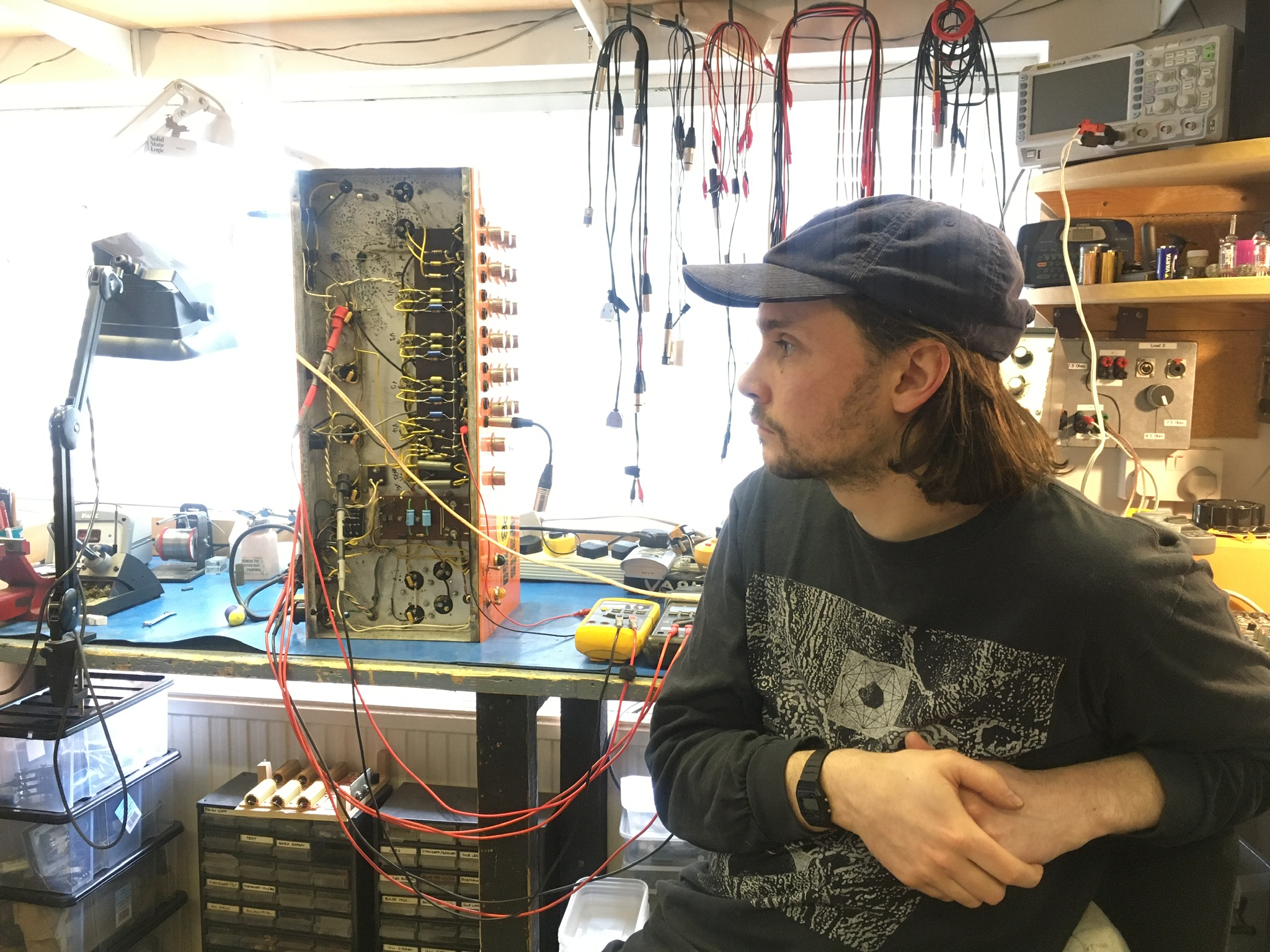
How would you describe yourself?
I am a technical repair engineer at a commercial music studio (Real World Studios). My passion is in restoring, repairing and building vintage and modern valve amplifiers or any audio equipment that is powered by valves.
What role does the repair of objects play in your life?
Repair is something that I taught myself after studying for a degree in audio engineering. That degree was very focussed on software engineering and audio in the digital realm, but I came away from that feeling that I wanted to make some stuff. So I started learning how to make small circuits that I could use with my guitar – like guitar pedals. My friends in bands encouraged me by buying these pedals and asking me to make special ones for them.
I opened my first workshop with the aim of building valve amps and guitar pedals, but in a matter of weeks my workshop got filled with broken amps and guitar stuff. What I didn’t realise was that everyone had audio electronics that needed fixing. I had no experience fixing stuff, and I had to work out how to fix it all.
When I moved into my second workshop repair became the focus of my work. I was repairing equipment in small professional music studios in Bristol and through that freelance work I ended up with this job here at Real World Studios. Every day here I get to bring something back to life. It’s very satisfying. There is a commitment to fixing things. The on-going philosophy of Real World is that everything that’s here should work.
Can you describe your repairing process?
No two repairs are the same. Process is everything. Especially with valve amps and vintage equipment. It’s a journey. The main challenge is finding parts and information, you sometimes spend days looking for something. I have learnt a lot from books and from long coffee-fuelled conversations with other experts who are willing to share their knowledge. It’s informal academia. Sometimes forums can offer essential clues, especially regarding the stranger things. You can be reading an old conversation between people from all corners of the world that leads to a circuit diagram someone scanned in 25 years ago. You can’t always do it alone, the community is a resource. Quite often with valve amps you are dealing with stuff that’s 70 years old and most of the the manufacturers don’t exist anymore. I need to search the second-hand market for parts or I need to figure out how the circuit works and what modern part I can use instead. Sometimes that’s an improvement, as often modern materials can last longer and even perform better. But that’s not always the case, especially with valve amps as they rely on metals like steel which were better in the past.
On one of those searches I came across a group of volunteers building a valve factory in Worcester called the Great British Valve Project. They have rescued some old valve making machinery and have bought the Brimar brand. They aim to produce valves in the uk again. I’ve got involved wiring up an activation panel which will be used to start up the valves when they have gone into production.
With vintage equipment – all of these things were designed and made by pioneering engineers. The reason this equipment is still around today is that they were amazing at what they did – in terms of materials, mechanics and electronics. Often it’s unusual materials and construction, delicate materials. The first part of my process is always research. So that I understand how something works and how it has been made. It’s looking for clues. After that you are into the nerdy electronic stuff.
Can you tell us about something that you recently repaired?
I’ve been restoring these big tannoy speakers that were well loved by the studio many years ago but now require a lot of love to get them back to top condition. I’m lucky enough to know a chap up the road, Neil Perry who installed a lot of the equipment here, he told me about a company that might still make cones for the speakers and they did, so I’ve re-coned them.
These speakers are built really well for repair because you can take them apart and service the voice coil. These took a week or so, on and off, to get to this point. The crossover units have been freshened up and I will restore the cabinets next, they need some cosmetic TLC and a bit of fresh wiring.
You have been in this job for two years. Is there something you have really enjoyed repairing?
These 300 watt amplifiers – there were a bunch of these, in parts, piled up in the corner of this workshop – looking like trash. They were used for things like linking a lot of headphones together, over long distances, for larger group ensembles, because of their ability to drive very low impedances. As well as being studio monitor amplifiers for passive speakers like the classic Yamaha NS10’s. Anyway, over the years they’d been neglected. I decided to learn what they were, how they worked and how to fix them. They are solid state amplifiers. I used it as an excuse to learn about transistor amps and to fix them and now they are all in use. A new part of the studios – the Dolby Atmos room – is now powered by four of these – something that could have easily been thrown away.
What is it that you enjoy about repair work?
Slowness – the introspective nature of it. You are giving time, love and attention to something and you see the results. I love being left alone to just think and do. And the deeper into that rhythm you get the quicker everything comes together. Finding the simple solution.